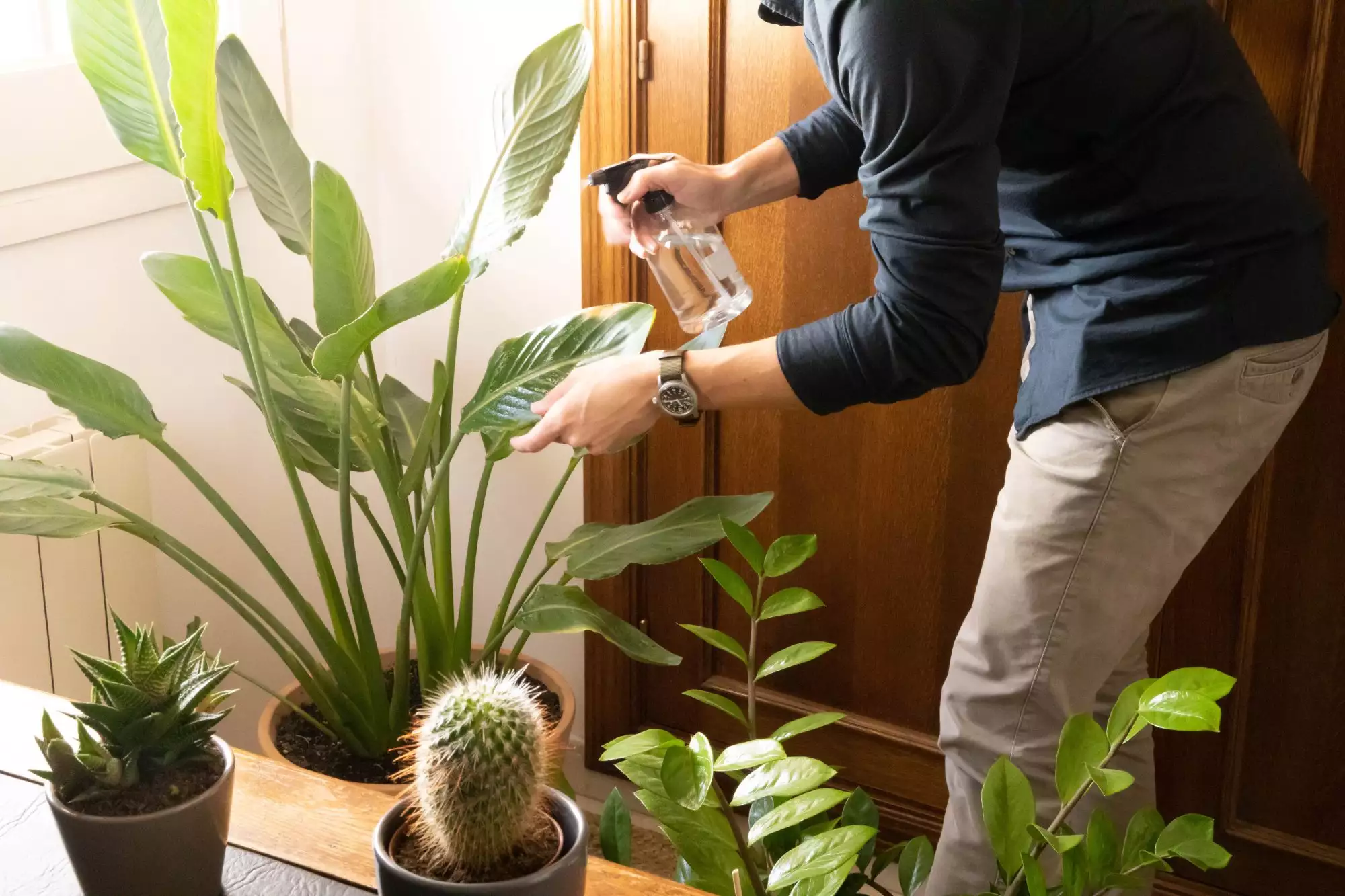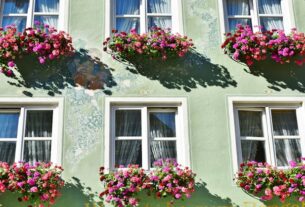If you are just starting out with your garden or houseplants, you will want to find a guide to help you start out right. There are a variety of different plants you can choose from, including succulents and air plants, but before you can start planting you will need to figure out what kind of potting mix to use and how to care for your plant. Here is a list of some of the things you will need to know, along with some tips and tricks to make your plants thrive.
Watering
Whether you are watering a houseplant or an outdoor garden, you should know the proper technique. Too little or too much water can harm your plant.
Watering your plant the right way will not only ensure a healthy plant but also liven up your home. Indoor plants are usually placed in a tray of water. If you place them in a tub of water, you risk rot and root damage. A watering can is more effective, as the water will flow directly to the base of the plant.
Depending on the type of plant you are watering, you may want to consider a moisture meter. Moisture meters can help you gauge your plants moisture levels without having to take your pots outside to see if it is still moist.
The best time to water a houseplant is during the morning. This is because morning temperatures are warmer and this time of day allows for splashes to evaporate. Overwatering your plant can be detrimental, especially if your plant is a succulent.
When watering a succulent, you need to water when the soil is dry. You can tell when it is dry by a number of indicators. For example, a white deposit may appear on the bottom of the container.
Another sign that your plant needs water is if it has wilting leaves. A dry leaf is a bad look for any plant. Wilting leaves make your plant more vulnerable to diseases and pests.
While it’s not possible to provide enough water to every plant in your home, you can water your plants a lot. The trick is to find out what your plant needs and follow a watering schedule that is flexible and tailored to your plant.
Hydroponics
If you have been thinking about growing your own food, or just want to do something different with your yard, you may want to consider Hydroponic gardening. This method allows you to produce a wider range of plants, without the hassle of soil. It also allows you to enjoy a more controlled and healthier plant.
The process is simple. You simply fill a container with water and place your plant inside. Watering your plant regularly is the key to successful hydroponic gardening. Using a hydroponic system reduces the chances of attracting insects.
The most popular plants grown using a hydroponic system include beans, lettuce, and herbs. They are not only low maintenance, but can be harvested after a few weeks.
In order to achieve the highest yield, you need to pay attention to the pH and temperature of your water. Your pH should be in the range of 6.0 to 7.0. Colder water slows down the growth of your plants.
Another important factor is sunlight. Most flowering plants require at least six hours of exposure to daylight per day. Depending on the type of flowering plant you choose, you may need supplemental lighting.
Hydroponic systems work best with opaque containers, such as glass and ceramic. However, you can also make your own by using a plastic or metal basket with a lid, or by using a plastic raft.
Some hydroponic systems use bubbles to provide oxygen to the water. A small air pump can also be used.
For the first time gardener, it is better to start with easier to grow plants. The goal of hydroponic gardening is to achieve success in the shortest time possible.
Choosing a potting mix
If you’re new to container gardening or have just started planting houseplants, you need to know how to choose a potting mix. The best potting mixes will have the ingredients to provide a fluffy, light-weight medium that retains moisture and air. Also, they’ll contain the right mix of nutrients to support healthy plant growth.
Potting soil is a mixture of a number of different mediums. Typically, it contains organic plant or animal-based materials, such as peat moss, and some type of wetting agent. These ingredients ensure that the potting medium drains well and provides nutrients.
Some potting mixes contain slow-release fertilizers, which can be beneficial for indoor plants. They also allow you to monitor the growth of the roots.
You can also make your own potting mixes. There are plenty of easy-to-follow recipes available online. However, be careful when choosing ingredients to use in your potting soil. Don’t use ingredients that you wouldn’t want in your own garden. Using unsustainable or chemical-laden substances can compromise the quality of your plant’s growth.
Some potting soil mixes may contain perlite or vermiculite. Perlite is a light-weight material that helps keep the soil fluffy. It has micropores, which help it absorb water and nutrients. When used in soil, it’s recommended that it be replaced after wetting. This prevents it from compacting and blocking the flow of water and nutrients.
You can also make a sustainable fertilizer using kelp meal, bone meal, or blood meal. In addition, you can include organic materials, such as alfalfa meal, processed forest products, and poultry litter.
Some potting soils are made specifically for plants that are native to specific regions. For example, an African violet mix is designed for improved drainage.
Pruning
Pruning is a process of cutting off dead or damaged portions of a plant. It also helps to shape plants and control their size. A proper pruning routine can help to make a garden look its best. There are many different types of pruning, and the reasons for the pruning may vary.
Pruning is an easy process, and it can have many benefits. The most important is that it helps to promote new growth. Also, it can keep the plant from getting sick or dying.
For most houseplants, it is a good idea to prune regularly. This will keep them from becoming too leggy or unbalanced. They will also look better and will be more healthy.
You can use pruning shears or a sharp knife. Make sure to clean the tools to prevent infection. Use a soap and water solution to wash them before putting them back in the plant.
When trimming, make sure to leave at least a third of the leaves and foliage intact. Do not cut off too much foliage, as this can make the plant weak.
In general, the best time to prune a plant is in the early spring. This is the ideal time for most trees, shrubs, and other perennials, because there is ample sunlight for new growth.
Some types of plants, such as orchids and Norfolk Island pines, should not be pruned. If you do want to give your plant a new look, then you can use pruning shears to trim away dead leaves and stems.
Other plants, such as palms and shrubs, should be trimmed to the ground. You can also remove small, injured or dead leaves. However, you should not cut more than a quarter of a leaf at a time.
Air plants
If you are interested in growing plants in your home, but aren’t sure which ones to choose, there are a few things you should know. For starters, there are air plants. They are very easy to grow and take very little maintenance.
These little plants grow by taking nutrients from the air and water around them. Although they don’t require soil, they do need to be watered regularly. This can be done by spraying, dunking or simply soaking.
Air plants are able to thrive in both warm and cool temperatures. However, they will need protection from temperatures below 45 degrees Fahrenheit. That means they are best suited to living in a warm room.
Air plants can be purchased individually or in sets. They can be displayed as decorative hosts, tucked into glass baubles, or even suspended from driftwood. You can also purchase tiny vases that are perfect for the miniature plant.
There are hundreds of different varieties of air plants. Some species are known for their colorful leaves, while others are ideal for low sunlight. Aerothos, for example, is native to Argentina, Paraguay and Brazil. It can also be found in a variety of colors, including purple, bronze, pink, and black.
A good way to identify air plants is to look for new growth coming from the center of the plant. In addition, you should check the color of the leaves. An air plant with green or yellow leaves is an indication of too much sunlight, while white or brown leaves indicate a lack of moisture.
The best place to display your air plant is in a bright spot with indirect light. If your plant is exposed to too much direct sunlight, it will wilt and die.


